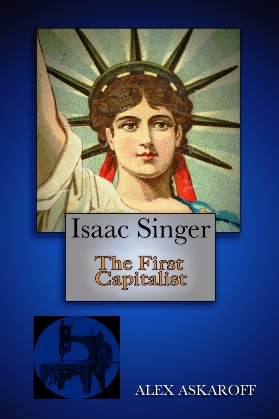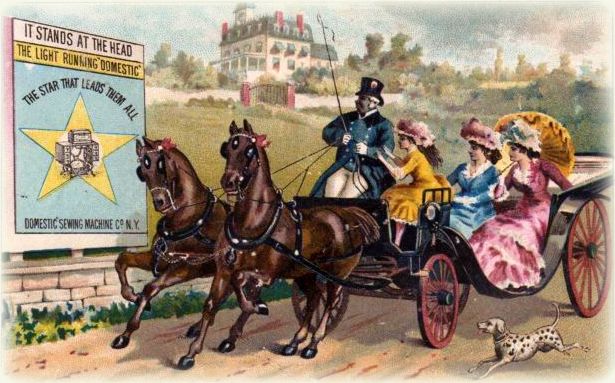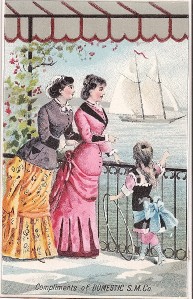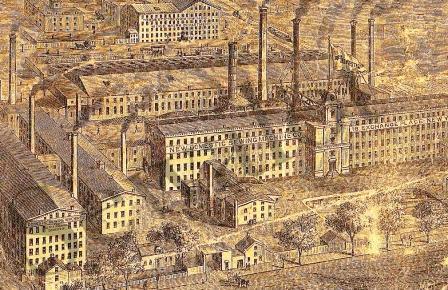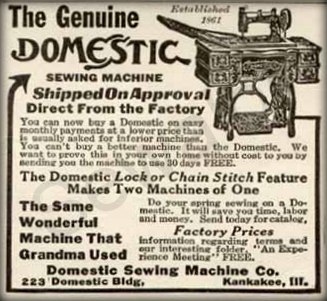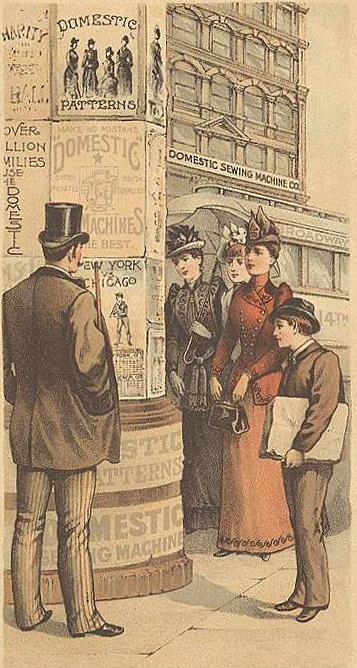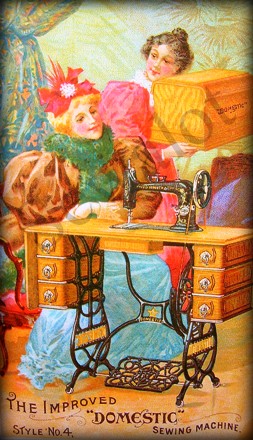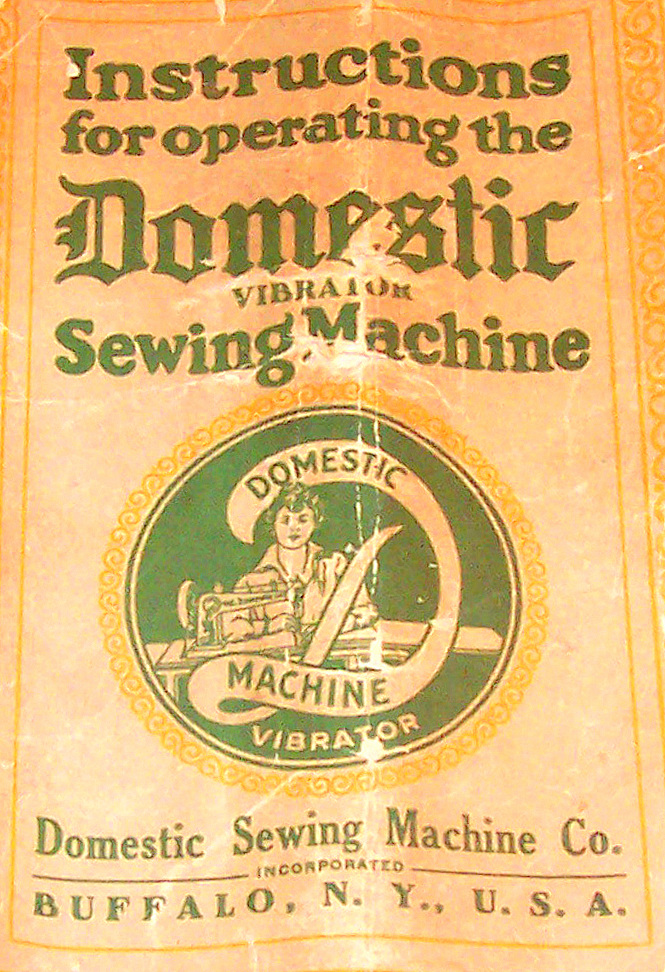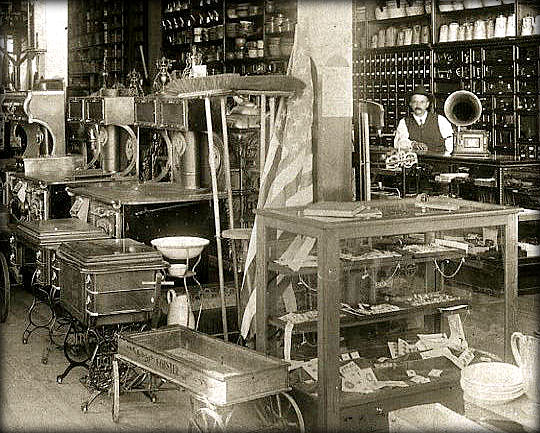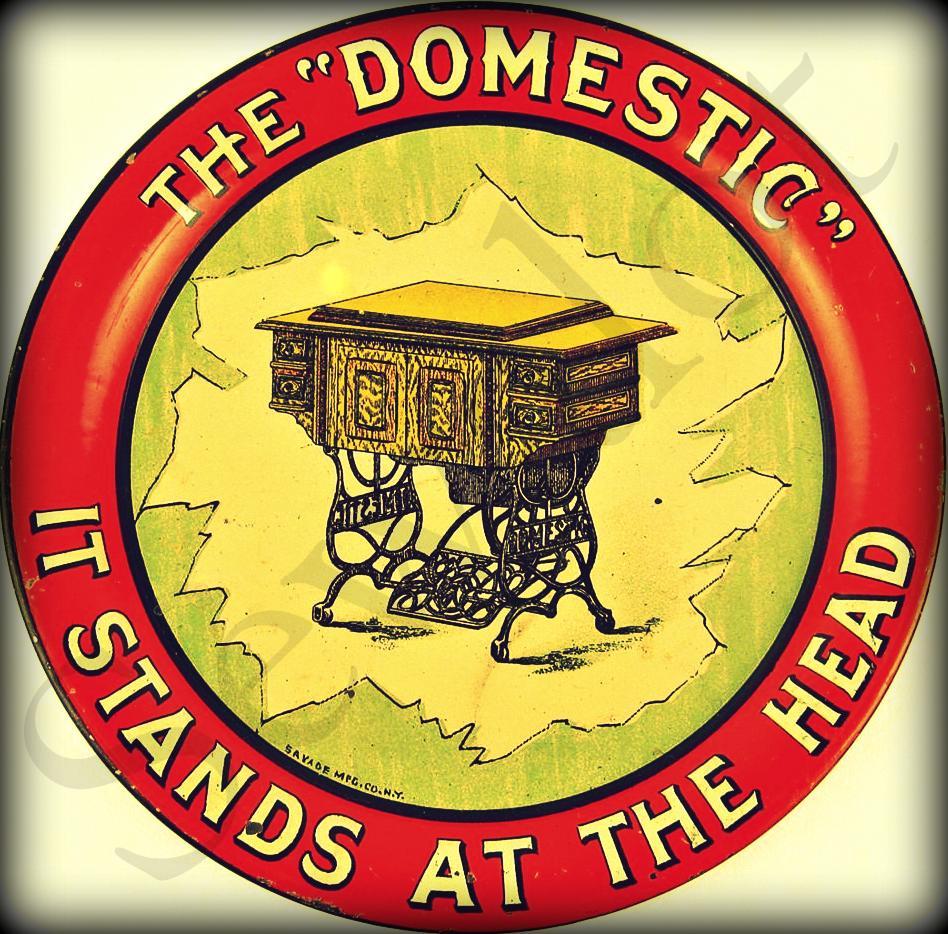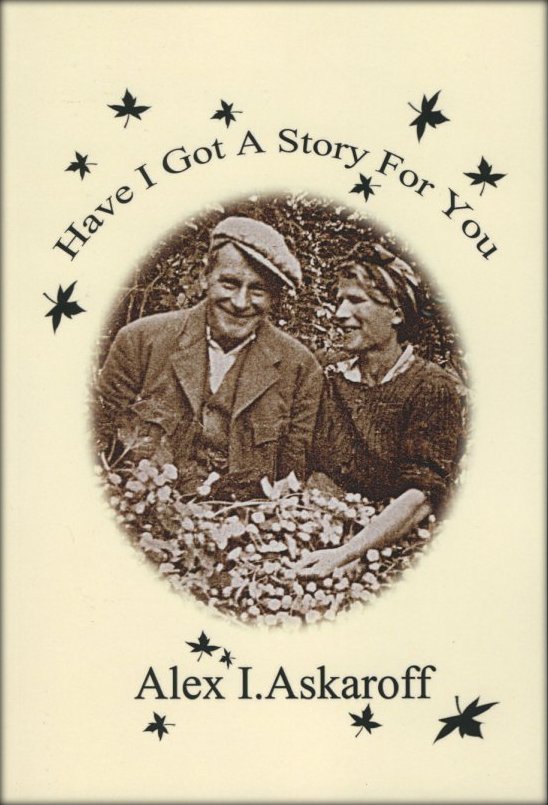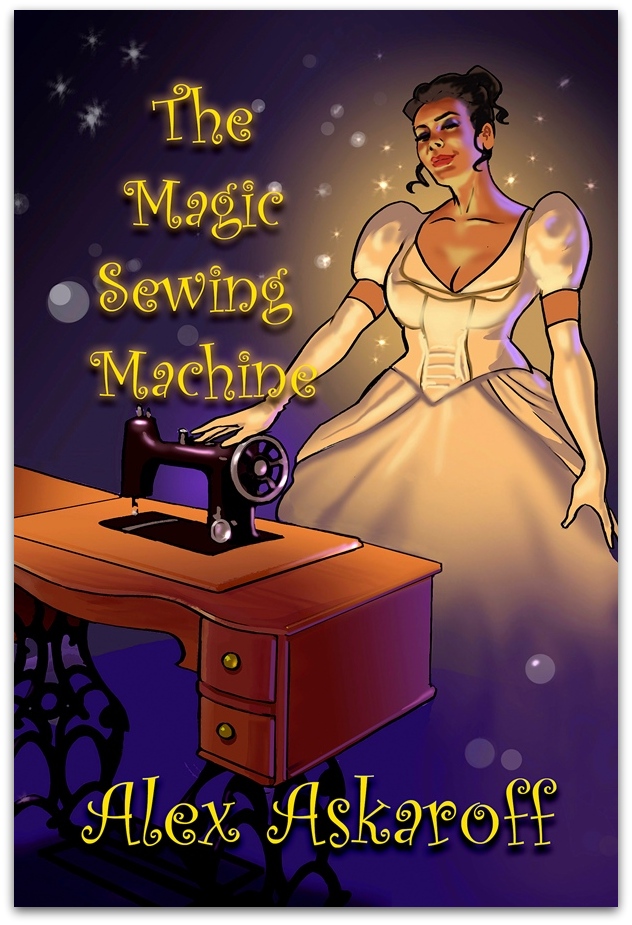|
||||
|
|
Alex I Askaroff
Alex has spent a lifetime in the sewing industry
and is considered one of the foremost experts of pioneering machines and
their inventors. He has written extensively for trade magazines, radio,
television, books and publications world wide. Over the last two decades
Alex has been painstakingly building this website to encourage
enthusiasts around around the Globe.
Most of us know the name Singer but few are aware of
his amazing life story, his rags to riches journey from a little runaway
to one of the richest men of his age. The story of Isaac Merritt Singer
will blow your mind, his wives and lovers his castles and palaces all
built on the back of one of the greatest inventions of the 19th century.
For the first time the most complete story of a forgotten giant is
brought to you by Alex Askaroff. |
|||
|
The Domestic Sewing Machine Company The star that leads them all
See Alex Askaroff on Youtube http://www.youtube.com/watch?v=8_asHiTqqtg&list=UL
I have dug up a little about the Domestic Sewing Machine Company and I will let you know what I have and hope that some keen collector will improve on this information. Adverts around 1913 boasted that the Domestic Sewing Machine Company was first established in 1861. The business was not called the Domestic Sewing Machine Company for a few years as it was mainly making parts for sewing machines like Grover & Baker rather than complete machines. Two partners, N. S. Perkins and William Mack, used the 1863 'Mach Patent' to set up sewing machine parts production. Towards the end of the American Civil War the Domestic Sewing Machine Company was formed. Their first complete sewing machine was made in 1864. When they did make their first complete sewing machines the machines used an open-ended shuttle much like the Weed machines of the period, possibly under licence.
During their height the Domestic Sewing Machine Co made sewing machines for themselves and Grover & Baker. They also made typewriters and sewing machines for Williams & Co, New York. By 1869 they were using the Domestic Sewing Machine name on their own complete machines. By 1872 they were manufacturing nearly 50,000 machines a year, each one built by hand. This was an amazing expansion. Just imagine a factory capable of hand building and assembling 1,000 sewing machines every few days. They must have had a huge number of employees. Stop for a second and imagine making that many machines and all the pieces, each machine unique and each machine painstakingly built from scratch. There factory must have been a sight to behold. Mass production was the key. Add to that the fact that some of their models, like the Domestic Sewing Machine No3, was retailing in treadle form at $60, several months wages in 1880, you can see why the company grew so quickly. Profits must have been good and larger premises were purchased.
So we know that N. S. Perkins and William Mack started the Domestic Sewing Machine Company in 1864 in Norwalk, Ohio. The company prospered for decades until finally disappearing during the Depression Era of the 1930's. An impressive building was acquired on the corner of Broadway and 14th Street, New York, and used as their Central Office.
S. A Davies came into the business around 1869 and was tasked with improving models and machinery. His expertise came from the arms business where mass-production was streaking ahead. There were soon dozens of Domestic Sewing Machine models from basic Grover & Baker and New Home copies to Singer New Family copies. Their most successful model was the Domestic Sewing Machine VS or vibrating shuttle sewing machine. It was a high-arm machine very much like the German machines of the 1890's. In their prime the Domestic Sewing Machine Company sold everything you needed to get you sewing, from the machine to the treadle and even sewing patterns. Starting with numbers such as the Domestic Sewing Machine No 1, 2, 3 they then moved to letters model A, B, C and so on and lastly to names. All of their machines look pretty standard, there were no unusual designs or shapes. You could look at a sewing machine of the 1940's and see the Domestic Sewing Machine of the 1880's. One of the Domestic Sewing Machine factories at 16 Exchange Place New York The New Domestic Sewing Machine Factory New York with many thanks to Karen Moore for supplying it. The factory was so large it was like a small town and carriages were provided to take guests on guided tours. In their prime the Domestic Sewing Machine factories were impressive. The one above in New York had its own river tributary to bring the wood for the cabinets directly to the cabinet works at the rear of the factory. The factories were on five or six floors and the huge chimneys belched out smoke all day from the furnaces below. A railway line picked up finished machines as they were transported across America to homes eagerly waiting for this modern miracle. But 1890 the Domestic Sewing Machine Company was one of the very oldest American sewing machine companies and still booming. All the old pioneers like Elias Howe, Grover & Baker, Wheeler & Wilson and Isaac Singer were long gone but the Domestic Sewing Machine Company was going from strength to strength. They boasted more silver-plating on their machines than any other sewing machine company and top-quality walnut was used in their cabinets. One of their main benefits in Domestic Sewing Machine manufacturing was the elimination of cogs and gears. This made the machines light and easy to turn, also very quiet. The light running domestic 1913 Domestic Sewing Machine Company advert The Sears Roebuck & Co sold many of the Domestic machines under their brand name of the Minnesota, even after White's took over the firm in 1924. The Minnesota, Franklin and the Domestic VS models are the most common ones to survive from the company. Sears & Roebuck the World's largest store
When the Domestic Sewing Machine Co exported to Europe they advertised their machines as the American Domestic Sewing Machine. The London agents were wholesale bookseller's Gordon & Gotch of 15 St Bride Street, Ludgate Circus, London. They sold the Domestic Sewing Machine for £4.4s and the treadles for £5.11s and were actively seeking other agents around Europe. Gordon & Gotch seemed a good idea at the time as they had contacts across the Globe from Australia to America. They were the perfect people to promote the Domestic Sewing Machine through their publications much like Orange Judd with the Beckwith Sewing Machine. They advertised their new machine as... The New American import, the American Domestic Light Running Lock-stitch Sewing Machine. Superior to all others.
From the Smithsonian I gained this piece of information...The Domestic Sewing Machine Company in Newark, New Jersey, was incorporated with the Domestic Sewing Machine Co, Norwalk, Ohio in 1872 and continued to produce machines and parts from Newark until 1906.
I am still not clear if there were two companies with identical names that joined or simply two premises? I hope someone will clarify this for me. Having such a common name as domestic sewing machine could lead to two companies picking this name in the 1800's, I mean there was no Internet to check! Domestic Sewing Machine Company 223 Domestic Buildings, Kankakee, Illinois. Domestic Sewing Machine Company, Buffalo, New York. Later a model called the New Domestic sewing machine was offered which also has an adaptor for chain stitching. The New Domestic Sewing Machine Company General Offices were at 16-18 Exchange Place, New York.
The New Domestic Sewing Machine won an award
at the National Export Exposition in 1899. It was awarded by the
Franklin Institute of Philadelphia.
By 1924 the White Sewing Machine Company acquired the Domestic Sewing Machine Co and incorporated many of their premises, factories and equipment into White's. By the 1930's production slowed down considerably and from then until 1950 they were simply badge sold machines under White's (but green machines). Domestic Sewing Machine Company, Inc. Cleveland , Ohio. Canada- 87 John Street, Toronto
|
||||
|
Most of us know the name Singer but few are aware of his amazing life story, his rags to riches journey from a little runaway to one of the richest men of his age. The story of Isaac Merritt Singer will blow your mind, his wives and lovers his castles and palaces all built on the back of one of the greatest inventions of the 19th century. For the first time the most complete story of a forgotten giant is brought to you by Alex Askaroff. Well that's it, I do hope you enjoyed my work. I have spent a lifetime collecting, researching and writing these pages and I love to hear from people so drop me a line and let me know what you thought: alexsussex@aol.com. Also if you have any information to add I would love to put it on my site. Fancy a funny FREE read: Ena Wilf & The One-Armed Machinist News Flash! Alex's books are now all available to download or buy as paperback on Amazon worldwide.
"This
may just be the best book I've ever read."
"My five grandchildren are
reading this book aloud to each other from my Kindle every Sunday.
The way it's written you can just imagine walking
beside him seeing the things he does. News Flash! Alex's books are now all available to download or buy as paperback on Amazon worldwide.
|
||||
|
|
|
|
||
CONTACT: alexsussex@aol.com Copyright ©
As a
new collector I have found your site
has increased my knowledge in
a short time to a degree
that I couldn't have
imagined. |
||||
